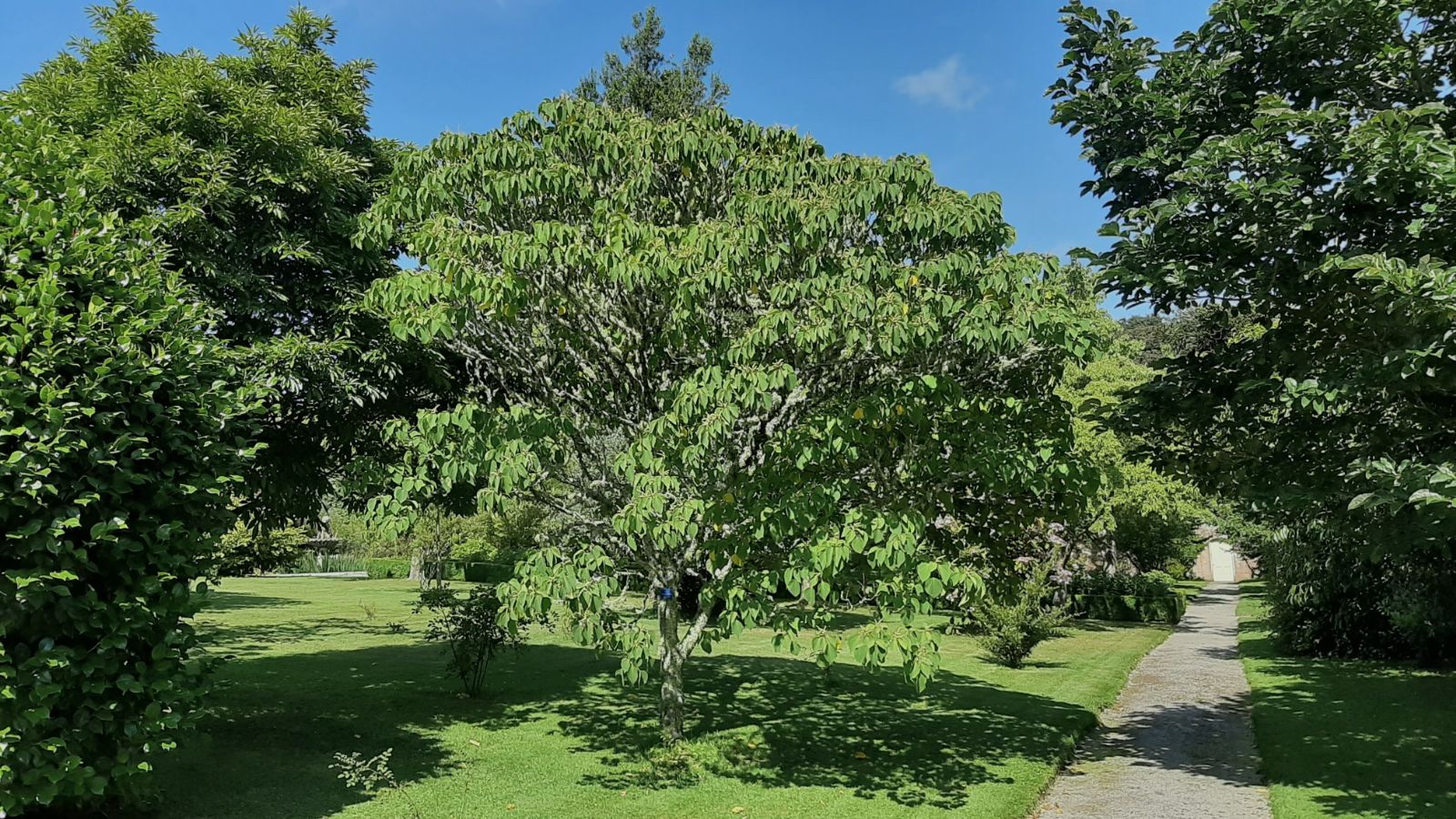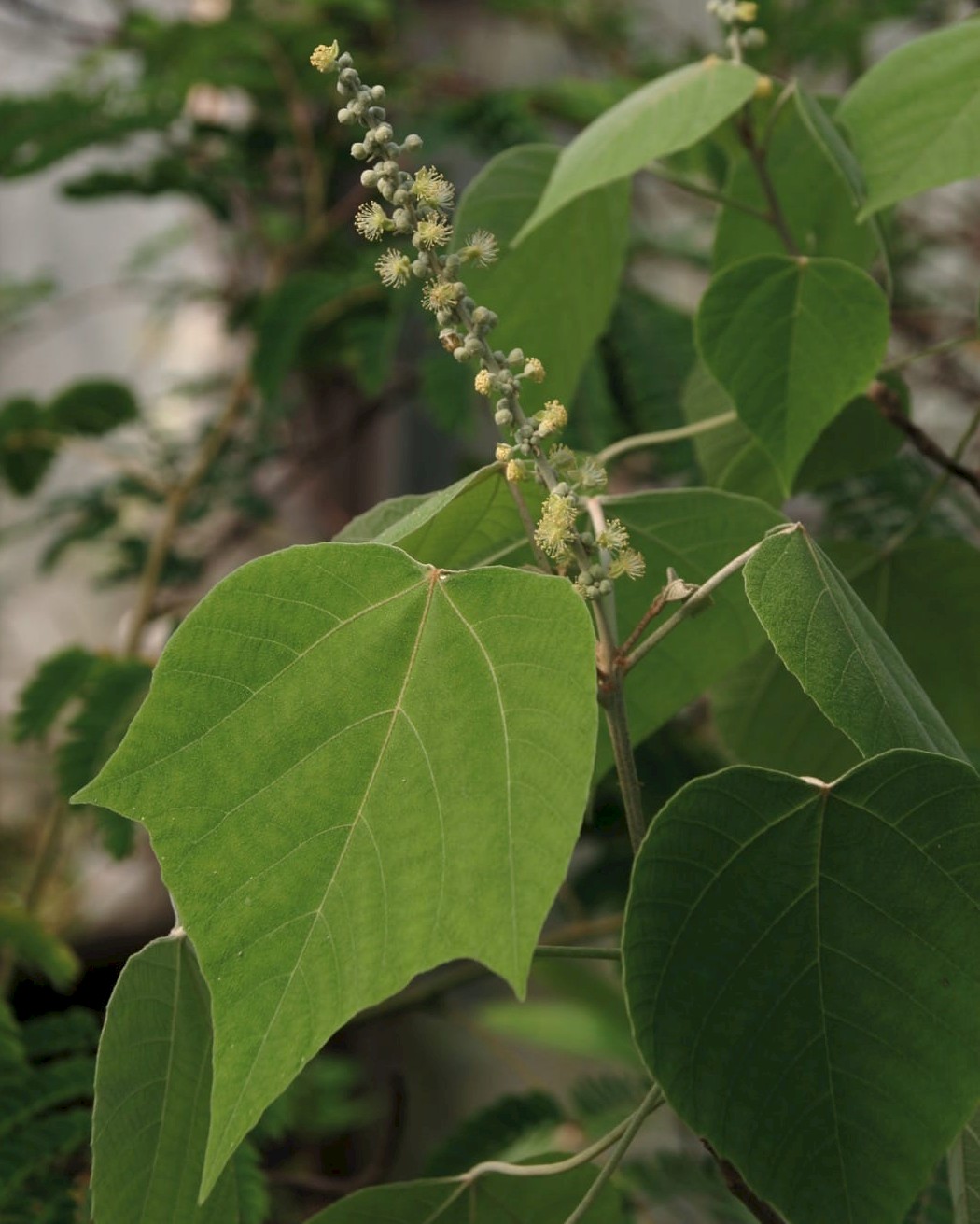Mallotus
Credits
Article from Bean's Trees and Shrubs Hardy in the British Isles
Article from New Trees by John Grimshaw & Ross Bayton
Recommended citation
'Mallotus' from the website Trees and Shrubs Online (treesandshrubsonline.
Family
- Euphorbiaceae
There are about 140 species of Mallotus, ranging from tropical Africa through Asia to the Pacific (Govaerts et al. 2000). They are dioecious (rarely monoecious) trees, shrubs or rarely scramblers. The leaves are alternate or opposite, petiolate, sometimes peltate, simple or lobed, entire or with dentate margins; stipules usually small. The inflorescences are terminal, subterminal or axillary; unisexual, with one to many flowers in spicate, racemose, paniculate or thyrsiform arrangements, and with small bracts. The male flowers are pedicellate; the calyx valvate, in (two to) three to four (to five) parts; the corolla absent; stamens 20–200(–250), with free filaments. The female flowers are pedicellate; the calyx 3–5(–10)-lobed, the lobes imbricate or valvate, persistent or caducous; corolla absent; the ovary smooth to spiny. The fruit is globose or (two to) three (to four)-sided, with a smooth, spiny, scaly or tomentose coat, and dehiscent (Radcliffe-Smith 2001).
Only two species of this widespread, largely tropical genus are cultivated outside in temperate areas, namely M. apelta (described below) and M. japonicus. The latter was described by Bean (1981a), who praised its foliage, although his commentary was rather brief. It is certainly worth trying both of these species in a warm, sunny site, for their handsome heart-shaped leaves, but even in climatically suitable locations they should probably be regarded as short-lived plants and it would be wise to renew them occasionally, from seed if possible, or semi-ripe cuttings.
Bean’s Trees and Shrubs
Mallotus
A genus of over 100 species of trees and shrubs, natives of the Old World and mostly tropical. Allied to Ricinus.


